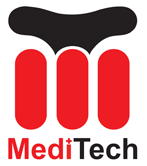選擇拭子以進行精密清潔, 必須首先考慮底物和土壤,因為這些條件決定是否需要清潔解決方案以及需要什麼樣的。

光滑的表面可與任何拭子一起使用,以及諸如IPA酒精之類的溫和溶劑。粗糙的, 磨料, 或易於障礙’ 表面需要比棉花更強的材料。 化學敏感的底物,例如橡膠, 有機矽, 丙烯酸酯也需要諸如IPA之類的輕溶劑, 輕型火藥, 赫普坦, 或isohexanes.
對於輕質土壤, 所有拭子類型均適合使用, 包括聚氨酯泡沫, 聚酯纖維, 和棉籤。開孔, 聚氨酯泡沫拭子很常見用於清潔,因為網狀結構捕獲並將顆粒和液體固定在泡沫中. 與棉籤不同, 聚氨酯泡沫拭子沒有纖維可以釋放並留在後面。常見的輕度溶劑(例如異丙醇和輕烴)將與上述所有拭子一起效果很好.
難以清除潤滑脂等土壤, 蠟, 通量, 多餘的粘合劑, 塗料需要更強大的材料,可能需要使用較強的溶劑和擦洗。棉籤和泡沫拭子會因侵略性擦洗而磨損或撕裂, 泡沫尖頭將在刺激性的溶劑中膨脹和破裂。更安全的選擇是更具化學性的, 更堅固的材料,例如未被錄製的材料(或封閉電池) 泡沫或針織聚酯。未被保留的泡沫具有抑制吸收的內部結構.
針織的聚酯拭子非常健壯,並且不受任何用於精確手部清潔的溶劑或溶液的影響. 這樣的溶劑包括酮 (丙酮和梅克), 芳香學 (甲苯和二甲苯), 酯 (N丁基乙酸), 鹵代溶劑和商業配方. 他們具有出色的擦洗能力,可以去除烘焙和燃燒的油脂, 部分固化的粘合劑和塗層,並在助焊劑殘留下乾燥. 針織的聚酯耐磨性使其成為在粗糙表面上擦洗的最佳選擇, 硬皮污染物, 以及PCB組件和線索周圍會切碎柔軟的材料,例如泡沫.
精密清潔選擇評論
- 識別底物. 確定基板將縮小所需的拭子類型. 加, 它有助於限制應用程序可用的溶劑類型.
- 識別土壤你正在清潔. 是否是 易於去除灰塵, 顆粒, 和輕油, 或難以清除諸如油脂之類的土壤, 通量, 黏合劑, 蠟, 和塗料.
- 確定是否需要清潔溶劑. 到現在為止,您將擁有足夠的信息來知道是否需要哪種溶劑.
- 選擇拭子。對於無需或溫和的溶劑而溫和清潔, 使用任何拭子. 低成本的泡沫, 快速單用途, 柔軟, 並符合表面. 聚酯可獲得最高的清潔度和最高強度. 用溶劑進行積極的清潔, 考慮一個化學耐受的拭子,如聚酯. 如果清潔磨料表面, 考慮像聚酯這樣的更強壯的拭子. 如果您正在研究敏感電子, 查看有關靜態耗散拭子手柄的詳細信息.
- 匹配拭子的大小和形狀到該區域, 休息, 或清潔縫隙.
來源: ChemtronicSeu
 無淨室泡棉棉籤, 聚酯棉籤, 打印機清潔套件製造商 – 醫療科技
無淨室泡棉棉籤, 聚酯棉籤, 打印機清潔套件製造商 – 醫療科技